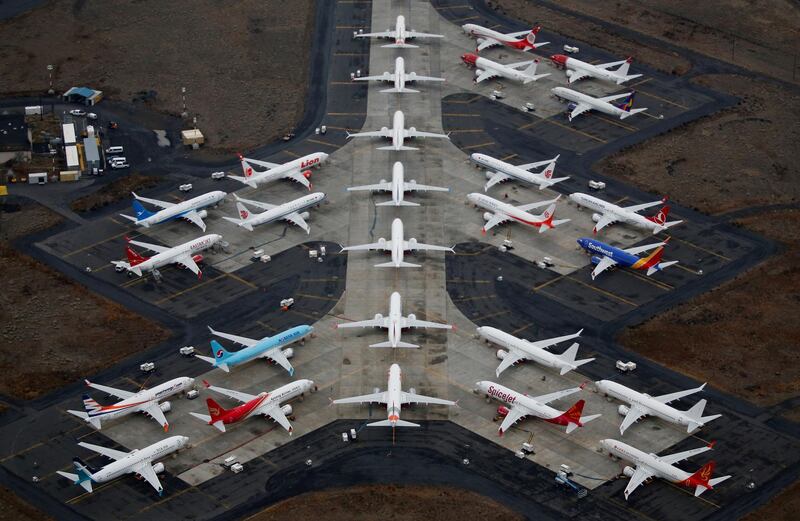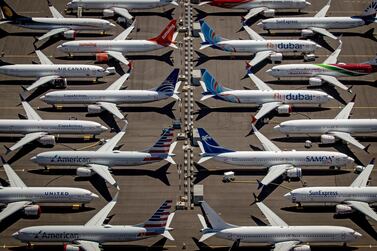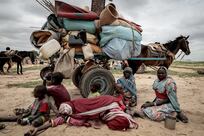Moody’s Investors Service forecast a negative outlook for global airlines in 2021, with operators expected to lose money until 2022 due to the impact of Covid-19 on air travel demand.
The credit rating agency does not expect passenger demand to make a significant return until the coronavirus vaccine is widely available and travellers are more confident about boarding a plane.
“We have a negative outlook on the airlines [and] we expect operating losses to run through 2021 into 2022,” Moody's airline analyst Jonathan Root said during a podcast.
The aviation industry is among the sectors that have been hit hardest by the pandemic, with the International Air Transport Association forecasting combined losses of $157 billion this year and in 2021.
“We are looking for a stronger recovery in demand in the back half of 2021,” said Mr Root.
Moody’s expects total passenger demand in 2021 to be about 40 per cent to 50 per cent of pre-crisis levels, he said.
Demand is expected to pick up in the second half as vaccines become more readily available.
The collapse in air travel demand has increased the industry's daily cash use and forced governments to disburse billions of dollars in aid to their national airlines.
“For airlines, sufficient coverage for daily cash burn is going to be the linchpin for the industry outlasting the coronavirus,” said Mr Root.
Of the 22 global airlines that Moody’s rates, it projects 900 days of cash cover for operators such as Texas-based Southwest Airlines and cash cover that is as low as 100 days for some operators in Europe or Latin America, he said.
Airlines are expected to continue to cut costs and seek liquidity from banks, capital markets and governments, he said. However, they will have to put up most of their assets as collateral to secure debt.
Mr Root said the challenge for airlines is how they can minimise cash burn.
While they can manage labour costs and capacity, they cannot control ticket revenue in terms of how many people take a trip, cancel or demand refunds.
“Government policies about adopting testing regimes instead of quarantines, and later on once vaccines are available – those are going to be the leverage to really help the airlines,” he said.
Corporate travel will take the longest time to recover to levels last recorded before the pandemic, Moody’s said.
“For corporate travel to return to pre-pandemic levels, a vaccine needs to be widely available so that businesses are comfortable sending their employees back on the road again,” said Peter Trombetta, Moody’s lodgings industry analyst.
The outlook for airports rated by the credit rating agency will be negative due the uncertainty about the shape of the recovery, Moody’s airport analyst Earl Heffintrayer said.
The suppressed demand for corporate travel will hit airport revenue harder as business travellers often buy more expensive, higher-margin products at terminals, he said.








